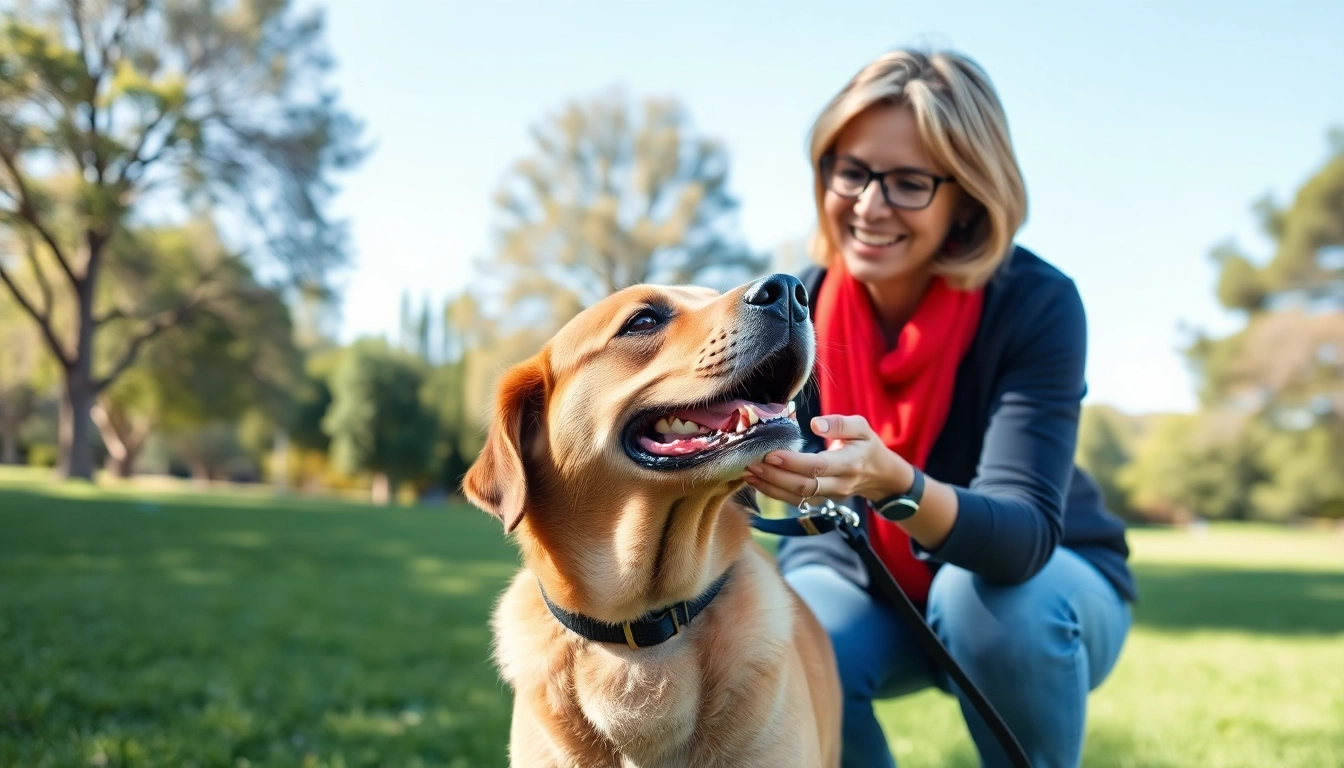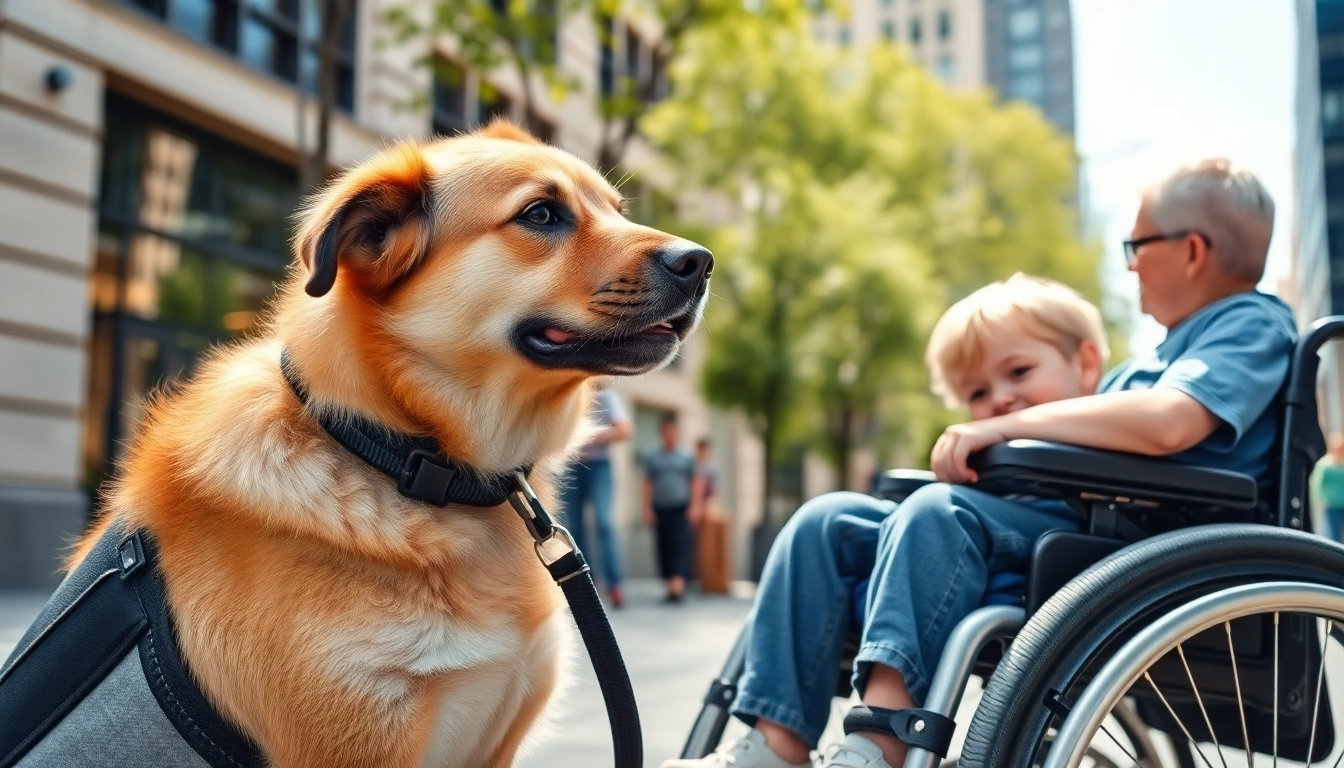Understanding the Basics of Dog Training Irvine
When considering training for your furry friend, it’s essential to understand the fundamental principles of Dog Training Irvine. Dog training isn’t just about teaching commands; it’s about building a relationship of trust and communication between you and your pet. This article aims to guide you through the essential aspects of dog training while addressing your specific needs as a resident of Irvine.
What is Positive Reinforcement?
Positive reinforcement is a training method that involves rewarding desired behaviors to encourage their recurrence. This technique capitalizes on your dog’s natural inclination to seek pleasure and avoid pain. Rather than resorting to negative punishment, positive reinforcement might include treats, praise, or playtime after your dog successfully performs a command or behaves correctly.
This training philosophy is grounded in the science of behavioral psychology, demonstrating that animals respond best to rewards rather than punishment. Studies have shown that dogs trained with positive reinforcement are more likely to exhibit a range of positive behaviors over time, establishing a more profound bond between the dog and owner.
The Importance of Consistency in Training
Consistency is critical in dog training. Dogs thrive in structured environments where commands are predictable. This means that everyone in the household must use the same commands and rewards, thus avoiding confusion. For example, if one family member uses “Sit” while another uses “Down,” the dog will struggle to understand what is expected of it.
Additionally, training sessions should occur regularly and be incorporated into your daily routine. Short, frequent training sessions are often more effective than longer, less frequent ones. This strategy helps reinforce learning and strengthens the dog’s memory of commands.
Key Commands Every Dog Should Learn
As you embark on your dog training journey in Irvine, several key commands should form the foundation of your training regimen:
- Come: This command is vital for safety. Teaching your dog to come when called can prevent dangerous situations.
- Stay: This command helps manage your dog’s behavior in various environments, especially in public.
- Leave it: This command is crucial for preventing your dog from consuming something harmful.
- Heel: Teaching your dog to walk beside you not only makes walking more enjoyable but also enhances control during excursions.
- Drop it: This command is useful for getting objects out of your dog’s mouth, especially if they pick up something they shouldn’t.
Choosing the Right Dog Training Method in Irvine
With various training methods available in Irvine, choosing the right approach can significantly impact your dog’s training success. Understanding the options empowers you to select a method that aligns best with your dog’s personality and your training goals.
Overview of Popular Dog Training Techniques
Several popular dog training techniques are practiced in Irvine:
- Clicker Training: This method uses a click sound to mark desired behaviors followed by a reward, establishing a clear association.
- Relationship-Based Training: This approach focuses on understanding your dog’s needs and emotions, fostering cooperation and trust.
- Electronic Training: While controversial, many trainers use electronic collars to discourage unwanted behavior. However, this method requires careful consideration and expertise.
- Modeling: This technique involves demonstrating desired behaviors to your dog, where they copy the actions of their owner or another obedient dog.
Customized Training Plans for Different Breeds
Customizing training plans according to your dog’s breed characteristics is crucial. Different breeds may have varying learning preferences, energy levels, and inherent behaviors. For instance, retrievers may respond well to fetch-related commands, while herding breeds might excel in agility courses. It’s beneficial to research your dog’s breed traits and effectively integrate them into your training regimen.
How to Assess the Right Method for Your Dog
To determine the best training method for your dog, consider the following factors:
- Temperament: Assess your dog’s personality. Are they eager to please, stubborn, or easily distracted? Tailoring the training approach according to these traits is crucial.
- Age: Puppies require different training techniques than adult dogs. For instance, young dogs may thrive on playful training, while older dogs might need more patience and structured commands.
- Previous Training: Consider any existing knowledge or commands your dog may already understand to build upon those foundations effectively.
Top Dog Training Classes in Irvine
Enrolling your dog in classes can provide structured training and access to expert guidance. Here’s how to navigate your options in Irvine.
Evaluating Local Training Options
Irvine boasts a variety of dog training classes, including both group and private sessions. When evaluating options, consider the following:
- Class Size: Smaller classes often receive more individualized attention, which can benefit both you and your dog.
- Trainer Qualifications: Research the backgrounds of potential trainers, preferring those with certifications from recognized organizations such as the Association of Professional Dog Trainers.
- Training Methods: Confirm that the training methods align with your beliefs and your dog’s needs. Positive reinforcement is widely recommended but may not be the only option available.
What to Look for in a Dog Trainer
Selecting the right trainer can make all the difference. Here are essential attributes to seek:
- Experience: Look for trainers with extensive experience in various training techniques.
- Philosophy: The trainer’s philosophy should resonate with you. Consider their approach to corrections and reinforcements.
- Success Stories: Seek testimonials and success stories from other dog owners to gauge the effectiveness of the trainer’s methods.
Specialty Classes for Puppy Training and Socialization
Puppy training classes are crucial for socialization and foundational skills. Consider enrolling in a class that emphasizes:
- Early Socialization: Classes should facilitate controlled interactions with other dogs and people to foster well-adjusted behavior.
- Sensitivity Training: Focus on helping puppies develop a positive relationship with minor discomforts, such as grooming, handling, and unfamiliar environments.
- Basic Obedience: Classes should cover essential commands, leash etiquette, and manners to prepare your puppy for more advanced training in the future.
Overcoming Common Dog Training Challenges
Training your dog may not always go as planned. Here, we address some challenges you may encounter along the way.
Dealing with Behavioral Issues in Dogs
Behavioral challenges such as excessive barking, digging, or aggression can often complicate training. Addressing these issues early is vital. Potential strategies include:
- Redirecting Behavior: When your dog exhibits unwanted behavior, redirect their attention to a more appropriate activity.
- Providing Mental Stimulation: Ensure your dog has ample physical and mental outlets to prevent boredom, which can lead to destructive behavior.
- Professional Help: When behavioral issues persist, consulting a professional trainer or a veterinarian behaviorist is advisable.
Strategies for Training Dogs with Anxiety
Dogs suffering from anxiety can be especially challenging to train. Implementing the following strategies can help ease their stress during training:
- Gradual Exposure: Gradually expose anxious dogs to the stimuli causing their stress in a controlled environment.
- Creating a Safe Space: Establish a designated area where they can retreat when feeling anxious.
- Use of Comfort Objects: Allow them to use comforting toys or bedding during training to reduce anxiety.
Importance of Patience and Persistence
Training a dog requires immense patience and a persistent mindset. You may encounter setbacks at times, but it’s crucial to maintain a positive outlook and remain dedicated to your training regimen. Remember that each dog learns at their own pace, and every small victory is progress.
Measuring Success in Dog Training Irvine
Success in dog training can be subjective, but defining it clearly can help in achieving your goals. Monitoring your dog’s progress is essential as you go along.
Setting Achievable Goals for Your Dog
SMART (Specific, Measurable, Achievable, Relevant, Time-bound) goals can provide a solid foundation for your training progression:
- Specific: Set clear, specific commands to focus on in each training session.
- Measurable: Develop a tracking system to monitor your dog’s compliance with commands over time.
- Achievable: Create realistic objectives for your dog based on their age and experience level.
- Relevant: Ensure that your training goals are relevant to your dog’s daily life, enhancing their overall behavior and interaction.
- Time-Bound: Establish a timeframe for achieving each goal to maintain your commitment and motivation.
Tracking Progress and Adjusting Training Methods
Documentation plays a crucial role in assessing your dog’s training journey. Keep a training journal outlining:
- Daily training routines and successes.
- Behavioral concerns that may arise.
- Modifications made to strategies or commands based on progress.
By analyzing your notes, it’s easier to identify patterns and make adjustments that suit your dog’s learning process.
Sharing Success Stories: Inspiring Your Dog Training Journey
Sharing experiences with a community of dog owners can serve as motivation. Consider joining local or online groups focused on dog training where you can celebrate milestones and challenges with others. Often, hearing success stories from fellow trainers can provide inspiration and new insights into your training approach.



